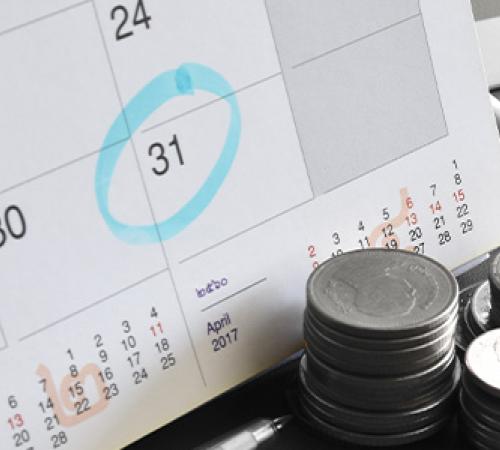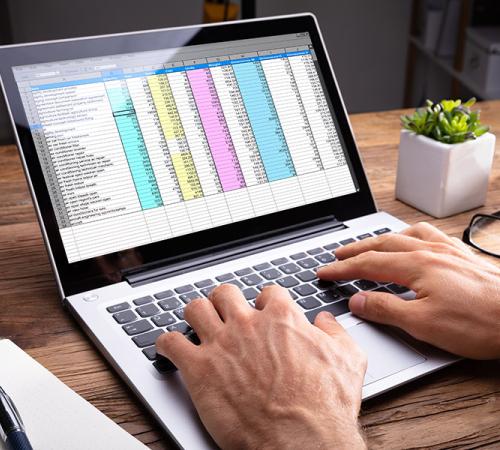

Being self-employed can bring freedom and flexibility to your working life. You can set your own schedule, choose your clients, and build your business on your terms. But it also means taking responsibility for your financial future.
Without the safety net of employer pension contributions and automatic enrolment schemes that employees enjoy, those who are self-employed must be proactive. This can seem daunting, especially when you’re focused on growing your business.
However, understanding how pension tax relief works, exploring the different pension schemes available, and learning why early planning may benefit you can help you take control of your retirement planning.
Why is pension planning important for the self-employed?
Pensions provide money to live off in retirement. Everyone who has enough National Insurance qualifying years is eligible for the State Pension – whether they are self-employed, employed, or unemployed.1 (external link) As of September 2025, the full new State Pension (external link) provides around £230.25 a week, but many find that they can’t rely on this alone.
Unlike employees, who are typically automatically enrolled in workplace pension schemes and can benefit from employer contributions and automatic tax deductions, self-employed professionals must plan carefully.
Starting pension contributions early means you can benefit from compound growth. Money invested in a pension has decades to grow, with investment returns that can potentially grow year after year.
For example, if you invest £1,000 that grows at 5% annually, you could have £1,050 after one year. In the second year, if you earn 5% on the full £1,050, you could have £1,102.50. Over time, this compounding effect can snowball. After 30 years, that initial £1,000 could grow to over £4,300.
Tax relief (external link)can be another benefit. The government supplements pension contributions through tax relief, effectively boosting the value of each contribution made. This relief is currently 20% for basic rate taxpayers (external link), which means that every £80 contribution effectively becomes £100 in the pension fund. Higher-rate taxpayers may be eligible to claim additional relief through their tax return.
For self-employed individuals who don’t have the guarantee of employer contributions, understanding the benefits of tax relief and compound growth can be key for successful retirement planning.
How do self-employed pensions work?
Setting up a self-employed pension can be a straightforward process. It typically involves making regular payments to a pension provider, which invests your contributions on your behalf.
This means setting up what’s known as a defined contribution pension, where the eventual value of your pension depends on what you put in and how well those investments perform over time.
Several factors affect how much your pension will provide, including how much you contribute, how well your invested money grows, how much your pension provider charges, and when you choose to access the funds in retirement. You can decide how much you contribute and when.
The earliest you can access your pension is typically age 55, unless you’re retiring early in ill-health or have a scheme with special provisions. You usually get more if you wait longer, so most are designed with retirement after age 65 in mind.2 (external link)
Once you reach the eligible age, you can typically:
- withdraw one or more lump sums (with up to 25% (external link) available tax-free),
- set up a regular income, including guaranteed options that last for life,
- or take income flexibly as and when you need it.
Self-employed pension schemes
There are various pension options to choose from:
- Personal pensions are the most common choice for self-employed people. These are defined contribution schemes where you make regular or ad-hoc contributions, which are invested in a range of funds chosen by you or your provider. Personal pensions typically offer a range of ready-made investment portfolios, making them relatively straightforward to set up and manage.
- Self-Invested Personal Pensions (SIPPs) let you choose how your money is invested. This option may appeal to those who want greater control over their pension investments or prefer working with a financial adviser to develop a personalised investment strategy.
- National Employment Savings Trust (NEST) is a publicly owned workplace pension scheme that’s also available to self-employed individuals. Originally designed for automatic enrolment, NEST can offer low charges and straightforward investment options, appealing to those seeking a low-cost, uncomplicated pension solution.
- Stakeholder pensions are a type of personal pension with capped charges and flexible contribution terms. They must meet specific government requirements, including limits on charges and lower minimum payments, which can provide extra protection.
Choosing the right pension scheme
Which pension scheme suits you may depend on various factors, including your needs, circumstances, and preferences.
- Tax relief benefits are available across all pension types. Checking that your pension scheme is registered with HMRC (external link)can help ensure you get tax relief on your pension contributions. Many providers automatically apply basic rate tax relief to your contributions, but higher rate taxpayers may need to claim additional relief through their tax return.
- Investment confidence is another factor. Individuals who are comfortable making investment decisions and want control over where their money is invested might choose a SIPP. Meanwhile, those who prefer a more straightforward approach might choose a personal pension with ready-made portfolios. Considering your investment knowledge and the time you want to dedicate to managing your pension can help you make an informed decision.
- Charges and fees can impact your pension’s growth over time. Many individuals compare annual management charges and administration fees to find the best scheme for their needs.
- Flexibility can be another consideration for self-employed professionals whose income may fluctuate. These individuals may look for schemes that allow you to vary contribution amounts, take payment breaks when business is slow, and make additional payments when cash flow is strong.
Self-employed pension and tax relief
Private pension contributions can offer tax advantages, making them a cost-effective way to save for retirement.
Tax relief on private pension contributions (external link) lets you claim back the Income Tax you’ve paid on the money you add to your pension.
You can receive relief on contributions up to 100% of your annual earnings, capped at the annual allowance (external link) (£60,000 as of 2025). However, the amount of tax relief you are eligible for depends on the amount of Income Tax you pay.
For basic rate taxpayers paying 20% tax, this means that for every £80 you contribute from your after-tax income, the government adds £20 in tax relief, making your total contribution £100. This effectively gives you an immediate 25% return on your contribution.3 (external link)
Higher and additional rate taxpayers may be eligible to claim more relief. Those paying 40% tax can claim an additional 20% relief through their Self Assessment tax return, while those paying 45% can claim back 25%.4 (external link)
You may also need to claim tax relief through a Self Assessment tax return if your pension scheme does not offer automatic deductions or is not HMRC-registered.
Alternative to pensions
While pensions can be one of the safest and most reliable ways to plan for retirement, there are various alternatives available:
- Individual Savings Accounts (ISAs) can provide tax-free growth and withdrawals with no restrictions on when you can access your money. The annual ISA allowance for 2025-26 is £20,000. Unlike pensions, you won’t receive tax relief on ISA contributions.
- Investment accounts can offer access to a diverse range of assets, including stocks, bonds, and funds. However, you will typically pay capital gains tax on your overall gains above the tax-free allowance (external link) (£3,000 for 2025-26).
- Property investment can yield both rental income and high investment returns. Property can also offer protection against inflation and portfolio diversification. However, it typically requires a significant initial outlay and ongoing management, and returns are not guaranteed.
- Premium Bonds issued by NS&I (a state-owned savings bank) can offer tax-free prizes, ranging from £25 up to £1 million. However, returns are not guaranteed.
Planning for retirement when you’re self-employed can require more effort than it does for employees. However, it can also be rewarding. Whether you choose a straightforward personal pension or a flexible SIPP, starting early, even with small contributions, can make a significant difference over time.
Disclaimer:
At Hiscox, we want to help your small business thrive. Our blog has many articles you may find useful as you plan your financial future. But these articles aren’t professional tax or pensions advice and should not be relied upon as such. Tax and pension laws are complex, frequently changing, and can vary by individual circumstances. So, to find out more about a subject we cover here, please seek professional assistance.





